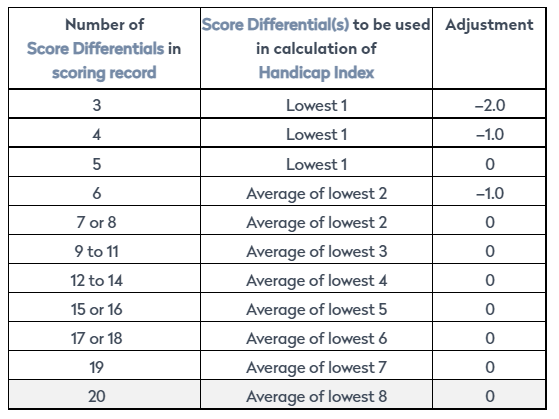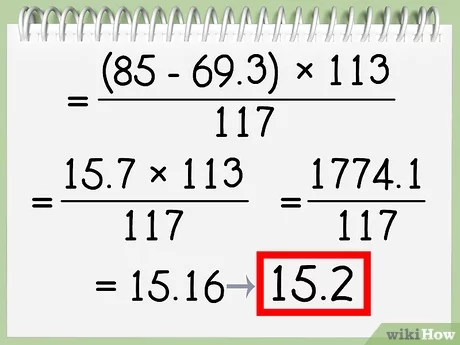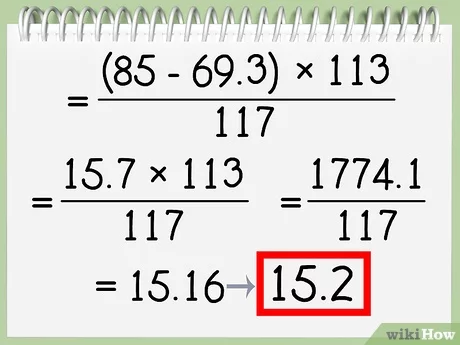Wondering how to calculate your golf handicap? It’s simpler than you think.
In this guide, you’ll learn the essentials of golf handicaps and how to compute yours. Golf handicaps level the playing field. They allow golfers of different skill levels to compete fairly. The system adjusts scores, making it possible for beginners to challenge seasoned players.
Calculating a handicap may seem complex at first, but it’s straightforward with the right steps. By understanding the basics, you can track your progress and set realistic goals. Whether you’re aiming to improve your game or just want to understand the numbers, knowing your handicap is crucial. Let’s dive into the details and break down the process step by step.

Credit: www.wikihow.com
Introduction To Golf Handicap
Understanding golf handicap is essential for anyone serious about the game. It levels the playing field. Beginners and experts can compete fairly. This post will guide you through the basics of calculating a golf handicap.
Importance Of Handicap
Handicaps make golf more enjoyable. They allow players of different skill levels to compete. Without a handicap, it would be difficult for beginners to play with experts. A handicap reflects a player’s potential. It shows how well a player can play on their best days.
Who Needs A Handicap
Most golfers benefit from having a handicap. Casual players might not need one. But anyone playing in tournaments or competitions will need it. It is also useful for tracking progress. Over time, a golfer can see improvement in their game.

Credit: www.randa.org
Basic Golf Handicap Concepts
Understanding golf handicap concepts helps improve your game. It levels the playing field. Whether you’re a beginner or experienced golfer, these concepts are key.
Course Rating And Slope
Course rating measures the difficulty for a scratch golfer. It represents the expected score for an expert. A higher rating means a tougher course.
Slope rating considers the difficulty for an average golfer. It adjusts the handicap based on the course’s challenge. The range is between 55 and 155, with 113 as the average.
Gross Score Vs. Net Score
Gross score is the total strokes taken during a round. It does not account for any handicaps.
Net score subtracts the handicap from the gross score. This score shows how well you played against your own ability.
Gathering Essential Information
Calculating your golf handicap requires gathering essential information. This initial step ensures accuracy in your calculations. You need data from your scorecards, rounds, and course details. Let’s delve into each element to understand their importance.
Scorecards And Rounds
Collect your scorecards from recent rounds. Aim for at least five rounds. Ensure the scorecards include your total score for each round. Accurate recording of each hole’s score is vital. This data forms the foundation of your handicap calculation.
Course Information
Understanding the course you played is crucial. Gather details about the course rating and slope rating. These ratings reflect the difficulty of the course. Course rating measures the expected score for a scratch golfer. Slope rating indicates the course’s difficulty for a bogey golfer. Both are necessary for calculating your handicap.

Credit: thegrint.com
Calculating The Handicap Differential
Golfers often want to know their handicap. This helps level the playing field. Calculating the handicap differential is a key step. This number shows how you performed compared to a scratch golfer. Let’s break down the process.
Formula For Handicap Differential
To find the handicap differential, you need a formula. This formula considers your adjusted gross score, course rating, and slope rating. Here it is:
Handicap Differential = (Adjusted Gross Score – Course Rating) x 113 / Slope Rating
Each part of the formula is important. The adjusted gross score is your total strokes minus any allowed reductions. The course rating is how hard the course is for a scratch golfer. The slope rating shows how challenging the course is for a bogey golfer compared to a scratch golfer. The number 113 is the standard slope rating.
Examples Of Calculations
Let’s look at an example. Suppose your adjusted gross score is 90. The course rating is 72.5. The slope rating is 128. Plug these numbers into the formula:
Handicap Differential = (90 – 72.5) x 113 / 128
First, subtract the course rating from your score. That’s 90 – 72.5 = 17.5. Next, multiply by 113. That’s 17.5 x 113 = 1977.5. Finally, divide by the slope rating. So, 1977.5 / 128 = 15.45. Your handicap differential is 15.45.
Here’s another example. Suppose your adjusted gross score is 85. The course rating is 70.2. The slope rating is 115:
Handicap Differential = (85 – 70.2) x 113 / 115
First, subtract the course rating from your score. That’s 85 – 70.2 = 14.8. Next, multiply by 113. That’s 14.8 x 113 = 1672.4. Finally, divide by the slope rating. So, 1672.4 / 115 = 14.54. Your handicap differential is 14.54.
Calculating the handicap differential helps you understand your game. It shows where you stand and how you can improve.
Averaging The Handicap Differentials
Calculating a golf handicap involves several steps. One important step is averaging the handicap differentials. This process ensures a fair representation of a player’s skill level. By focusing on the most consistent scores, players get an accurate handicap. Let’s break down this process.
Selecting The Best Differentials
First, choose the best differentials from your recent rounds. Typically, you select the lowest differentials. This helps in reflecting your best performance. The number of differentials you select depends on how many rounds you’ve played. More rounds give a more accurate average.
Calculating The Average
After selecting the best differentials, calculate the average. Add up the selected differentials. Then, divide the total by the number of differentials. This gives you the average differential. This average is crucial in determining your handicap.
Remember to round the average to one decimal place. This ensures precision in your final handicap calculation. A precise average leads to a fair handicap.
Applying The Handicap Index
Applying the Handicap Index is essential for every golfer. It allows for fair competition among players of different skill levels. This section will guide you through the steps of understanding and using the Handicap Index.
Understanding Handicap Index
The Handicap Index is a measure of a golfer’s potential playing ability. It is calculated using the best scores from recent rounds. The lower the Handicap Index, the better the golfer. The United States Golf Association (USGA) formula helps in this calculation.
- Calculate the adjusted gross score (AGS).
- Determine the course rating and slope rating.
- Use the formula:
(AGS - Course Rating) x 113 / Slope Rating. - Average the lowest handicap differentials.
Once you have the Handicap Index, you can apply it to any course.
Converting To Course Handicap
Next, you need to convert the Handicap Index to a Course Handicap. This ensures the handicap is fair for the specific course. Each course has a unique difficulty level, reflected in its slope rating.
Use the following formula:
Course Handicap = Handicap Index x (Slope Rating / 113)
Let’s break it down with an example:
| Handicap Index | Slope Rating | Course Handicap |
|---|---|---|
| 15.0 | 120 | 16 |
| 10.0 | 130 | 12 |
So, if your Handicap Index is 15.0 and the slope rating is 120, your course handicap will be 16. This adjustment levels the playing field, allowing golfers of different abilities to compete fairly.
Remember, accurate calculations ensure a fair game. Use the provided formulas and tables to get your Course Handicap. Happy golfing!
Maintaining And Updating Handicap
Keeping your golf handicap accurate is essential. It reflects your true playing ability. Regular updates ensure fairness in the game. Knowing how to record and revise your handicap is key.
Recording Scores Regularly
To maintain your handicap, record your scores after every round. This means every time you play, note your score. Consistent recording helps in reflecting your true ability.
Use a scorecard to track your scores. You can also use mobile apps designed for this purpose. Make sure to include all rounds, even the bad ones. Accuracy is crucial.
Here are some tips:
- Record scores immediately: Don’t wait to write them down.
- Include all scores: Every round counts, good or bad.
- Use a consistent method: Whether it’s a scorecard or an app, stick to one.
Revising Handicap Periodically
Your handicap should reflect your current playing ability. Review and update it regularly. This ensures your handicap is fair and accurate.
Revising your handicap involves checking your recorded scores. Calculate the average of your best scores. Update your handicap based on this average.
Follow these steps:
- Review your scores: Look at the scores you’ve recorded.
- Calculate the average: Find the average of your best scores.
- Update your handicap: Adjust it based on the new average.
Regular updates keep your handicap fair and competitive. Make this a habit for an accurate reflection of your game.
Using Handicap In Competitions
Understanding how to use a golf handicap in competitions can elevate your gameplay. A golf handicap helps level the playing field, making matches fairer. Players of different skill levels can compete on equal terms. This section will explore how to use a handicap in competitions.
Leveling The Playing Field
A handicap allows players of various abilities to compete fairly. It adjusts the number of strokes a player gets. A higher handicap means more strokes. A lower handicap means fewer strokes. This way, a beginner can compete with an advanced player.
Consider a match where Player A has a handicap of 10 and Player B has a handicap of 20. Player B gets an additional 10 strokes. This adjustment balances the competition. Both players now have a fair chance to win.
Strategies For Different Handicaps
Knowing your handicap can help you plan your game. For high handicappers, focus on reducing mistakes. Play safe shots and avoid risky moves. Each stroke matters. Aim to stay consistent throughout the game.
Mid-level handicappers should focus on improving their short game. Putts and chips can make a big difference. Practice these skills regularly. It can lower your handicap over time.
Low handicappers should refine their overall strategy. Analyze each hole and plan your shots. Focus on precision and control. This level of play requires a deeper understanding of the course.
Using these strategies can help players of any handicap level. It makes the competition more enjoyable and fair.
Common Mistakes And Tips
Calculating your golf handicap can be tricky. Many golfers make common mistakes. Avoiding these errors helps you get an accurate handicap. Below are some tips to help you improve your calculation and your game.
Avoiding Calculation Errors
Errors in calculating your golf handicap are common. Here are some tips to avoid them:
- Use Correct Scores: Always use adjusted gross scores, not just your raw scores.
- Accurate Round Count: Ensure you have the correct number of rounds. Use at least five rounds for a more accurate handicap.
- Course Rating and Slope: Use the right course rating and slope. These values affect your handicap.
A table can help you understand how course ratings and slopes work:
| Course Rating | Slope Rating | Difficulty |
|---|---|---|
| 70.0 | 113 | Average |
| 72.0 | 130 | Difficult |
| 68.0 | 105 | Easy |
Using the wrong values skews your handicap. Double-check all numbers before finalizing your calculation.
Improving Your Handicap
Improving your golf handicap takes time and practice. Here are some steps to help:
- Practice Regularly: Consistent practice improves your game.
- Play Different Courses: Playing various courses challenges your skills.
- Track Your Progress: Keep a record of your scores. This helps you see improvement areas.
- Get Professional Help: Consider taking lessons from a golf instructor. Expert advice can make a big difference.
Following these tips helps you lower your handicap. Stay patient and persistent. Improvement comes with time and effort.
Resources For Further Learning
Understanding how to calculate your golf handicap can seem complex. Fortunately, there are many resources to help. These resources will guide you step-by-step. They also provide tools to make the process easier.
Online Calculators
Online calculators simplify the handicap calculation. They are easy to use and accessible. Many websites offer free handicap calculators. Just input your scores, and they do the math for you. This saves time and reduces errors. Examples include USGA and Golfshake.
Golf Associations And Clubs
Golf associations and clubs provide reliable information. They often have guides and tutorials. These resources help you understand the handicap system better. You can also attend workshops or classes. These offer hands-on learning experiences. Additionally, clubs often have experienced members who can offer advice.
Frequently Asked Questions
What Is A Golf Handicap?
A golf handicap is a numerical measure of a golfer’s playing ability. It allows golfers of different skill levels to compete fairly.
How Do You Calculate Golf Handicap?
To calculate a golf handicap, use your 20 most recent scores. Apply the USGA formula, considering course rating and slope rating.
Why Is A Golf Handicap Important?
A golf handicap ensures fair competition. It allows golfers of varying skill levels to play on an equal footing.
What Is The Usga Formula For Handicap?
The USGA formula involves averaging your best scores. It adjusts for course difficulty using course and slope ratings.
Conclusion
Calculating your golf handicap can seem tough at first. But with practice, it becomes easy. Follow the steps outlined, and you’ll soon know your handicap. This helps you track progress and enjoy the game more. Remember, consistency is key. Keep playing, keep practicing, and your scores will improve.
Enjoy your time on the course and have fun!



